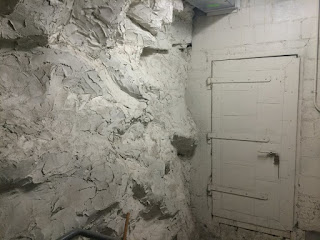Countdown #14: For 100 year old punk jazz, look no further than James Reese Europe's 'That Moanin' Trombone.' The "Martin Luther King of music" (Eubie Blake), Europe was the leading figure on the African-American music scene of New York City in the 1910s.
Countdown #13: In 1938 Benny Goodman appeared at Carnegie Hall with one of the first public concerts to feature a racially integrated group. The live recording of this historic concert is one of the best-selling jazz albums of all time and features the brightest jazz luminaries of the day including Count Basie, Lionel Hampton, Gene Krupa, Buck Clayton, Johnny Hodges and Lester Young.
Countdown #12: Dizzy Gillespie was the first musician to bring Latin American rhythms to Jazz . (He also ran for the U.S. Presidency in 1964, promising to make Miles Davis head of the CIA). We feature his famous Manteca in our concert "Jazz At Carnegie Hall".
Countdown #11: In 1912, James Reese Europe made history when his Clef Club Orchestra became the first band to play jazz at Carnegie Hall. It is difficult to overstate the importance of that event in the history of jazz in the United States — it was 12 years before the Paul Whiteman and George Gershwin concert at Aeolian Hall, and 26 years before the famous Benny Goodman concert.
Countdown #10: Billie Holiday made her first Carnegie Hall appearance as a headliner in 1948 - just days after being released from prison on a drug charge. It was her first public performance in nearly a year. The high point was her rendition of “Strange Fruit” in the second half with the hall in complete darkness and a single spotlight etching her face.
Countdown #9: Duke Ellington’s "Black, Brown and Beige" premiered at Carnegie Hall in 1943 (it was panned by the critics). Duke’s composition was the first extended jazz piece of symphonic dimensions lasting for 45 minutes. It’s most famous section "Come Sunday" will be performed on 23rd September at Cadogan Hall in our "Jazz At Carnegie Hall" Concert.
Countdown #8: James Reese Europe's "Society Orchestra" became nationally famous in 1912 accompanying theatre headliner dancers Vernon and Irene Castle. The Castles helped "America learn to dance from the waist down," when they introduced the Castle Walk and Foxtrot.
Countdown #7: Dizzy Gillespie played a trumpet with the bell turned upwards at a 45-degree angle. The story goes that in 1953 someone fell on his trumpet stand, causing the bell back to bend. Gillespie liked the sound and since then had trumpets specifically built the same way.
Countdown #6: Tony Bennett began his career as a singing waiter in Italian restaurants around Queens aged 13 years. He has appeared at Carnegie Hall more than twenty times and at 91 is still going strong.
Countdown #5: In 1918 James Reese Europe led the official band of the African-American Hellfighters regiment. He was the first black American soldier in WW1 to face the enemy in combat when he joined a French unit on a night patrol. This is in stark contrast to the jazz bandleaders of WW2 who were all kept well away from the frontline.
Countdown #4: Billie Holiday: "Mom and Pop were just a couple of kids when they got married. He was eighteen, she was sixteen and I was three."
Countdown #3:
James Reese Europe, the first man to bring jazz to Carnegie Hall and the first African American to be granted a public funeral in the city of New York. Having survived the battlefields of WW1 he was murdered backstage by his drummer in 1919.
Countdown #2: During prohibition from 1920 to 1933, Carnegie Hall hosted a hidden basement speakeasy. It could only be accessed when the patron inserted a key from the outside, and the inside doorman inserted a key from the other and they turned them at the same time. Joan Crawford made her dancing debut within this little club. The space now houses one of Carnegie Hall’s large air conditioning units.
Countdown #1: In 1939 Benny Goodman and Glenn Miller appeared on the same bill at Carnegie Hall. In the first set Benny Goodman stole Millers current hit 'Sunrise Serenade', leaving Miller fuming in his dressing room. In the second half Miller not only repeated this tune but also One O'Clock Jump which Goodman also played in act 1.
The Jazz Repertory Company returns to Cadogan Hall on the 23rd September for the brand new show Jazz At Carnegie Hall.













ReplyDeleteThis is really good, i love this content also visit recording studio . Thanks for sharing.